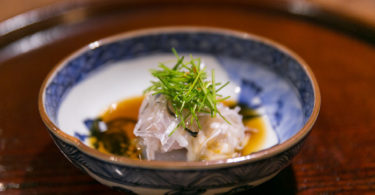9 Foods That Are Banned in Different Countries: A Global Look at Food Regulations
What’s considered a culinary delight in one country might be a banned substance in another. Food regulations vary widely around the world, driven by health concerns, cultural values, and environmental considerations. Here’s a list of nine foods that are banned in various countries, offering a glimpse into the diverse ways different nations approach food safety and quality.
1. Azodicarbonamide
Banned In: Most European Countries, Australia Azodicarbonamide is a chemical used as a dough conditioner and bleaching agent in foods like bread and pastries. Due to concerns over potential health risks, it’s banned in the European Union, Australia, and several other countries.
2. Brominated Vegetable Oil
Banned In: European Union Found in some sports drinks and fruit juices, brominated vegetable oil can lead to an increased bromide concentration in the body, which is why it’s banned in the EU to prevent potential health issues.
3. Palm Oil
Banned In: Iceland (Proposed Ban) Iceland has proposed a ban on palm oil due to the environmental damage caused by its production, which includes deforestation and loss of habitat for endangered species.
4. Raw Milk
Banned In: Canada, Saudi Arabia, and Several US States Raw milk, which has not been pasteurized, can carry harmful bacteria and is banned in some countries and US states to prevent foodborne illnesses.
5. Kinder Eggs
Banned In: United States Kinder Eggs, chocolate eggs with a toy inside, are banned in the US under federal law because of safety concerns regarding small toys that could be choking hazards for children.
6. Haggis
Banned In: United States Haggis, a traditional Scottish dish made from sheep’s organs, is banned in the US due to food safety regulations that prohibit the use of certain offal.
7. Konjac Jelly
Banned In: United States Also known as “It’s-It” or “Bibigo,” this jelly-like snack is banned in the US because it can pose a choking risk, especially for young children.
8. Chicle
Banned In: United States Chicle, a natural gum made from the sap of the sapodilla tree, was once popular in the US but is now banned due to concerns over the quality and safety of imported chicle.
9. Miso
Banned In: European Union (Certain Varieties) Certain varieties of miso, a traditional Japanese seasoning, are banned in the EU due to high levels of citrinin, a mycotoxin produced by molds that can grow on the miso.
Understanding Food Bans
Food bans are implemented to protect public health and safety, and they often reflect a country’s unique concerns and values. While some bans are based on scientific evidence of potential harm, others may be influenced by cultural preferences or economic factors.
Reasons for Food Bans
- Health Concerns: Foods may be banned if they are linked to health risks, such as the presence of harmful bacteria or toxins.
- Environmental Impact: Bans may be put in place to protect the environment, as seen with the proposed ban on palm oil in Iceland.
- Cultural Values: Some foods are banned because they conflict with cultural or religious beliefs.
- Regulatory Compliance: Foods may be banned if they do not meet a country’s regulatory standards for safety and quality.
Conclusion
The global landscape of food bans highlights the complexity of food regulation and the diverse approaches taken to ensure public health and safety. While some of these bans may seem surprising or even controversial, they are part of a broader effort to balance the need for safe, nutritious food with the realities of a globalized food supply. As consumers, being aware of these bans can help us make informed choices about the food we eat and appreciate the importance of international cooperation in food safety.

